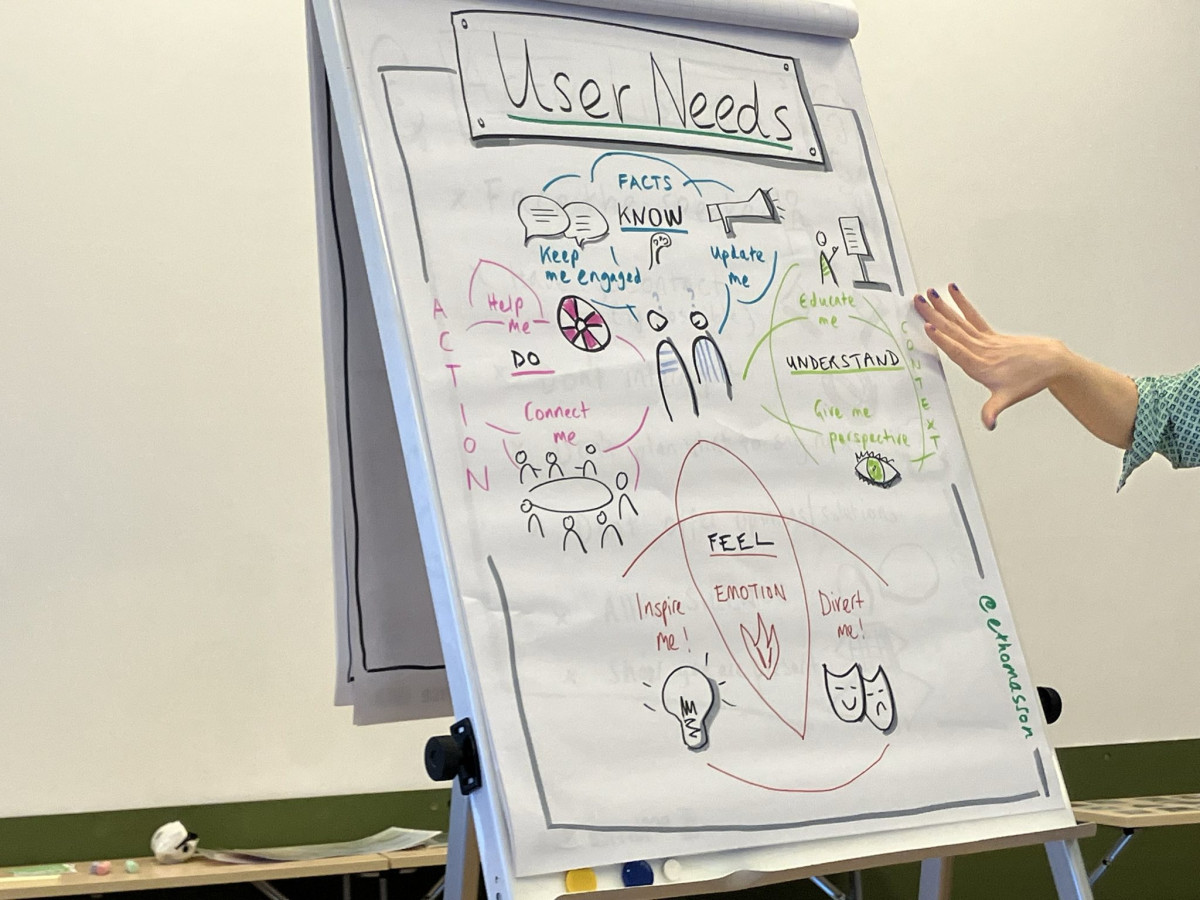Coping with eco-anxiety and building resilience: Strategies for journalists
***Please note: This article is part of a recap of CLEW's 10th anniversary conference ***
Read our other recaps:
Let’s all take a moment for a collective exhale. Feel better?
There’s a lot going on in the world, and it’s important to take a moment to breathe. As journalists covering climate and the environment, it’s easy to let pessimism and even anxiety get the best of us.
“One thing that we normally forget when we are in a newsroom is we’re humans,” Biena Magbitang, the Asia Director of Climate Tracker, told attendees of the CLEW Turns 10 conference.
Biena had to make resilience a routine, after interviewing climate disaster survivors and always forging ahead to the next story. In an interactive workshop called “Validate feelings: How journalists can cope with eco anxiety and better address their audiences,” Magbitang and her co-presenters offered strategies for avoiding burnout and strengthen resilience.
In recent years, a deeper understanding of the emotional strain many of us feel has emerged. The terms eco-anxiety and eco-grief have now entered research parlance — while not recognised mental disorders, they can sometimes escalate into full-blown anxiety or depression.
Coping Strategies
Scientists have identified three main areas for coping: action, emotional engagement, and self-care. Each approach can offer relief.
In the action department, as journalists, we may already be operating at full throttle, as we’ve dedicated our livelihoods to the active pursuit of gathering information and writing up our findings for audiences. But action doesn’t have to focus on the professional sphere. It can also include making personal choices in accordance with your values, however major or minor — everything from altering one’s diet or upcycling to joining climate strikes to making targeted donations to green organisations.
Emotional engagement is likely where we can all do better. Talk about your feelings. Lower your ironclad journalist’s shield, shed the heavy armor, and allow yourself to truly process your emotions, rather than locking them away. Grief is something we may be feeling in response to species, ecosystem, or cultural knowledge losses. Recognising that is the first step towards dealing with it.
Sometimes our peers can act as great therapists. Creating space in your newsroom to discuss feelings and connect with colleagues who understand the pressure you’re under can be a balm for eco-anxiety.
“Journalists think that they’re good at listening, but actually we’re not brilliant at it"
Presenter Emma Thommason, a former Reuters journalist and mental health consultant, recommended journalists first work on their active listening skills. Instead of listening for that “golden quote,” she asked participants to practice by facing the speaker, maintaining eye contact, not interrupting, not planning what to say next, not offering opinions or solutions, and allowing silence.
“Journalists think that they’re good at listening, but actually we’re not brilliant at it, because we almost always have an agenda when we ask questions,” Thomasson said. “We have a story in mind that we want somebody to say something that basically often confirms what we already think and we’re almost always in a hurry to get what we want out of the conversation.”
Then there are values affirmations, an easy exercise where journalists write down the values that matter most to them. That process of reflection can reduce stress, strengthen willpower, increase openness, improve accuracy, and close achievement gaps.
Once that all-important introspective work is done, don’t forget about self-care, where distancing and compartmentalisation is encouraged. Reset your resilience meter by doing whatever you find relaxing, distracting, and rejuvenating.
This can include carving out time for exercise, practicing mindfulness, or getting a massage (now may very well be the time to book that excursion to the spa)!
There are a number of other resources journalists can turn to when eco-anxiety flares up - they include not only individual, but also collective resilience strategies. Psychologists for Future, a German grassroots movement of mental health professionals, dive deeper into coping mechanisms with a handy list of recommendations for covering the climate crisis. The Self-Investigation, an international nonprofit focused on creating healthy media work environments, hosted a free Mental Health in Journalism Summit online at the beginning of October.
And Netzwerk Recherche, a nonprofit by journalists for journalists, runs a helpline to discuss “high workloads, precarious employment, low fees, pressure in the editorial office, threats at demonstrations, gruesome images at the photo desk” and anything else that may be on callers’ minds.
Our Readers Have Feelings Too
Of course, we’re not the only ones dealing with high-stress topics and feelings of dread. Our readers are likely experiencing a lot of the same feelings we are.
“You can feel mentally distressed yourself but also the things that you write can cause distress in your audience,” Lea Grosse, climate communication trainer at Klimafakten, said. “So you have to think on multiple levels.”
Presenters pointed to the User Needs Model first developed by the BBC World Service to identify why readers consume news. They found six reasons: update me, keep me on trend, inspire me, divert me, educate me, and give me perspective.
As news producers, we have a tendency to gravitate toward the update and educate me categories, without contemplating how the facts might make readers feel, or that readers need inspiration or distractions too.
“If we write our factual story about the floodings near Central Europe, about the number of people, it’s a rational story,” Thomasson said. “But people get scared, they get upset, they get anxious, they get angry. There’s a whole other emotional dimension to that that this model doesn’t capture.”
Dealing with these uncomfortable emotions and how they may trickle down to readers is critical work. But if we look at our feelings head-on, we can navigate the ever-present challenges of eco-anxiety with resilience and a reinvigorated sense of purpose.


